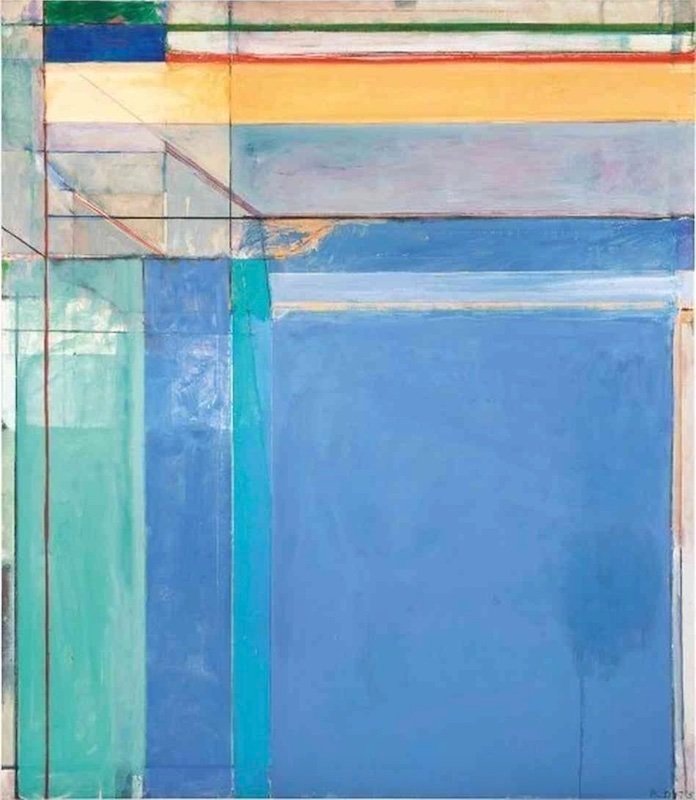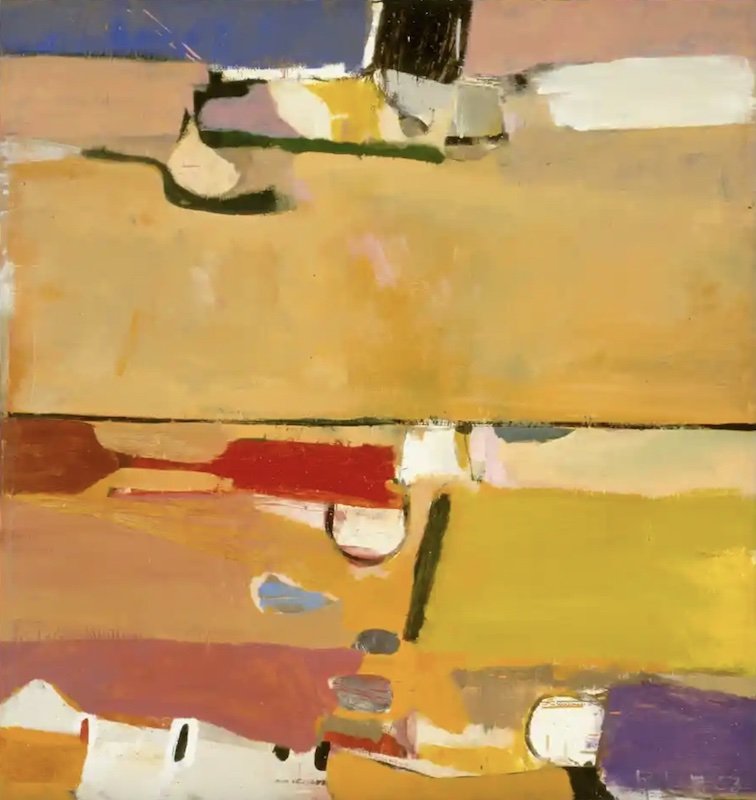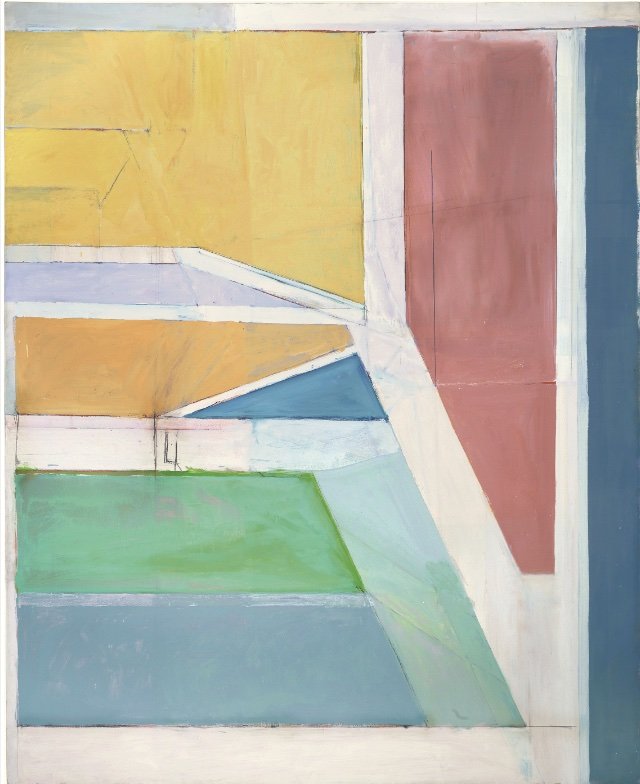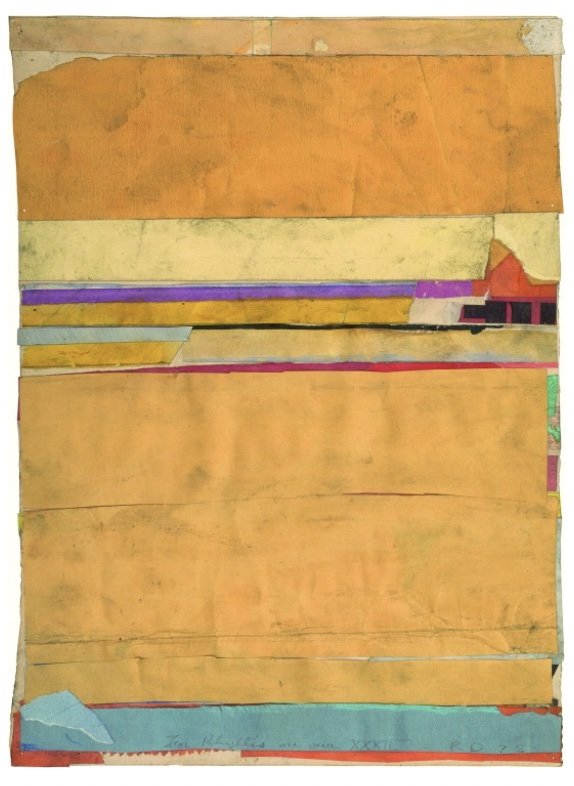Notes to myself on beginning a painting - Richard Diebenkorn
The scale of Diebenkorn’s art is captivating, as is its seeming simplicity. His analysis of the painting process is particularly insightful.
The Californian abstract expressionist painter Richard Diebenkorn (1922-1993) is one of my painting heroes. The sheer scale of his work is captivating, achieving a hard-won balance with deceptive simplicity.
Described by the Washington Post as “one of America's finest abstract painters,” Diebenkorn's innovative, oversized paintings pack a powerful punch in both colour and composition, in which he searched for the ‘tension within the calm’.
He was however, little known in Britain prior to the retrospective at the Royal Academy in London in 2015, the first major show of his work in the UK in 24 years.
My teacher Robin Child first introduced me to his work in 2006, in a week-long painting class which he led to deconstruct and analyse his methodology, working from art books and slides. But to see his work in the real is a whole other experience. I can still recall how bowled over I was at seeing his New Mexico paintings in New York (Diebenkorn in New Mexico, NYU, 2008).
Later, when I moved to San Francisco, I made several visits to see his paintings in the de Young Museum and at SFMOMA. And later, when living in LA, I made a special trip with my mother (also an abstract painter) to see his most celebrated paintings, the Ocean Park Series, at the Orange County Museum of Art (OCMA) in 2012.
Richard Diebenkorn: The Ocean Park Series (installation view), 2012; Orange County Museum of Art, Newport Beach, CA. Photo: Bliss Photography.
The scale of Diebenkorn’s work is captivating, as is their seeming simplicity. Viewing the traces of his thought process - pencil lines attempted and cancelled, over-painting and the reworking of earlier layers deliberately left visible - are all fascinating breadcrumbs for an aspiring artist like me to try and follow.
There is no road map for intuitive painting, so how do you navigate the uncharted territory of making an abstract painting?
One of the most useful tools I use is to apply Diebenkorn’s Notes to Myself on Beginning A Painting, which were found among his papers after his death in 1993. They offer a remarkable insight into his artistic process and the rigour with which he approached his search for abstraction.
I keep these notes in my studio wall and refer to them when I get stuck. (See below for typed version.) I know them so well now I can recite them as I look at a canvas unsure of where to turn next. I recently made a video in which I reflect on making an abstract painting and applying his notes to my painting process, referencing them as signposts along the way.
For me, like many other painters, these Notes also offer valuable guidelines on how to remain open to allowing your best work to emerge (“do search, but in order to find other than what is searched for”). He points to the need to swim in the discomfort of not knowing where you’re going (“tolerate chaos”); to avoid forcing an outcome (“don’t discover a subject - of any kind”); or succumbing to the temptation to shut down the creative process prematurely (“the pretty, initial position which falls short of completeness is not to be valued - except as a stimulus for further moves”).
Taken as instructions for understanding the creative process in general, they could be applied to any creative endeavour - even life itself. “Attempt what is not certain. Certainty may or may not come later. It may then be a valuable delusion”. I love that one!
Thank you, RD, for sharing your wisdom, a pathway out, and a legacy of truly great paintings.
Photo credit: Colin C. McRae / Crown Point Press
Notes to myself on beginning a painting by Richard Diebenkorn
Attempt what is not certain. Certainty may or may not come later. It may then be a valuable delusion.
The pretty, initial position which falls short of completeness is not to be valued - except as a stimulus for further moves.
Do search. But in order to find other than what is searched for.
Use and respond to the initial fresh qualities of the paint but consider them absolutely expendable.
Don’t “discover” a subject - of any kind.
Somehow don’t be bored but if you must, use it in action. Use its destructive potential.
Mistakes can’t be erased but they move you forward from your present position.
Keep thinking about Polyanna.
Tolerate chaos.
Be careful only in a perverse way.
If you’d like to develop your painting practice with me, please consider joining me for a Studio Circle where you can ask me anything about your work or your creative process. You’ll be amongst others grappling with similar challenges and receive inspiration and personalised feedback to help move you forward right away.






